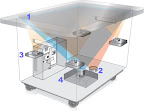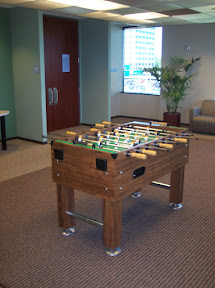 Adding to my dream gadget list: Cool solar-powered backpacks from Reware and from Voltaic for a couple hundred bucks. (Dunhill offers a more expensive option.) They look good, they keep your devices' batteries charged and, in the case of the Reware products, they're made from recycled pop bottles.
Adding to my dream gadget list: Cool solar-powered backpacks from Reware and from Voltaic for a couple hundred bucks. (Dunhill offers a more expensive option.) They look good, they keep your devices' batteries charged and, in the case of the Reware products, they're made from recycled pop bottles. I'm suspicious of Bank of America spokesman Ernesto Anguilla. Reading between the lines of the AP story "Promotional Fax Mistaken for Bomb Threat", I think the AP writer is suspicious, too. Anguilla claims that BofA's Ashland, Mass., branch's fax machine malfunctioned, so they only received the top part of a promotional fax; the part that showed a hand lighting a bomb fuse under the words "The Countdown Begins". He says that the lower part that describe "Small Business Commitment Week" didn't arrive so it was understandable that the branch manager reported a bomb threat, causing police to evacuate a bunch of local businesses for three hours.
I'm suspicious of Bank of America spokesman Ernesto Anguilla. Reading between the lines of the AP story "Promotional Fax Mistaken for Bomb Threat", I think the AP writer is suspicious, too. Anguilla claims that BofA's Ashland, Mass., branch's fax machine malfunctioned, so they only received the top part of a promotional fax; the part that showed a hand lighting a bomb fuse under the words "The Countdown Begins". He says that the lower part that describe "Small Business Commitment Week" didn't arrive so it was understandable that the branch manager reported a bomb threat, causing police to evacuate a bunch of local businesses for three hours.I call shenanigans on the malfunctioning fax machine explanation. The more likely explanation is that the complete fax arrived and the branch manager is merely an overreacting idiot who should quit his job and devote himself to keeping the streets of Boston free from Mooninites.













